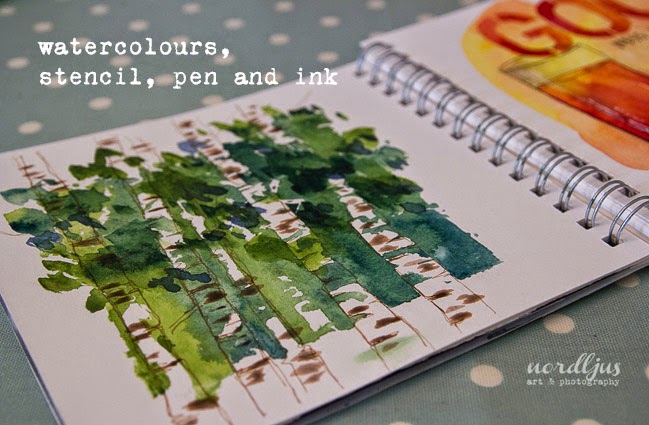For the past two weeks, I've been spending most of my time not in my studio, but at my computer. I bought Lightroom (a photo editing and organising programme) one and a half years ago, started learning the basics halfway, and then left it at that. The keywording was incomplete, and during the last year, I just downloaded my photos into Lightroom, and left it at that. I didn't even really do any editing. I've always meant to go through my photos and delete the bad ones immediately after downloading them, but of course I never really did. I've spent hours and hours over two weekends to go through all the photos from the past 4 years, adding keywords, and generously deleting all those wonky, blurry, nearly similar and plain boring photos. Although it was a lot of work, it was also great to go through all those photos, remembering trips and places, and also realising which aspects of my photography really need some working (as well as seeing some improvement since 2010). And thanks to all the indexing work, I'll be able to find photos again easily now. And I'm taking my time to go deeper into all the possibilities of Lightroom (it really is a fantastic programme!). And of course to start doing more editing again, and share photos, instead of just leaving them sleeping on my hard disc.
I took these photos last September, during a lovely afternoon spent at Kingston Maurward. It was the last day before the end of my holiday and we were looking for something to do close to home. Kingston Maurward, just a half hour walk across the fields away, seemed perfect. The large Georgian country house houses an agricultural college these days, but the grounds, with its animal park and gardens, are open to the public. We had a terrific time visiting all the animals, and of course they made perfect photo subjects. We were particularly smitten by the cute guinea pigs. I just wished I had had a lens with a bigger zoom.
I explored the Print module over the weekend, which allows you to quickly make collages. So much easier than to do it Photoshop.
I've got loads more photos to share, so many cute animals there, but I'll have to post them in another post. Photo editing can be very time consuming, especially if you do it when your main focus is learning the programme. Once I worked my way through all the modules, and created a few templates, my work flow will, hopefully, become much more efficient and productive.



















